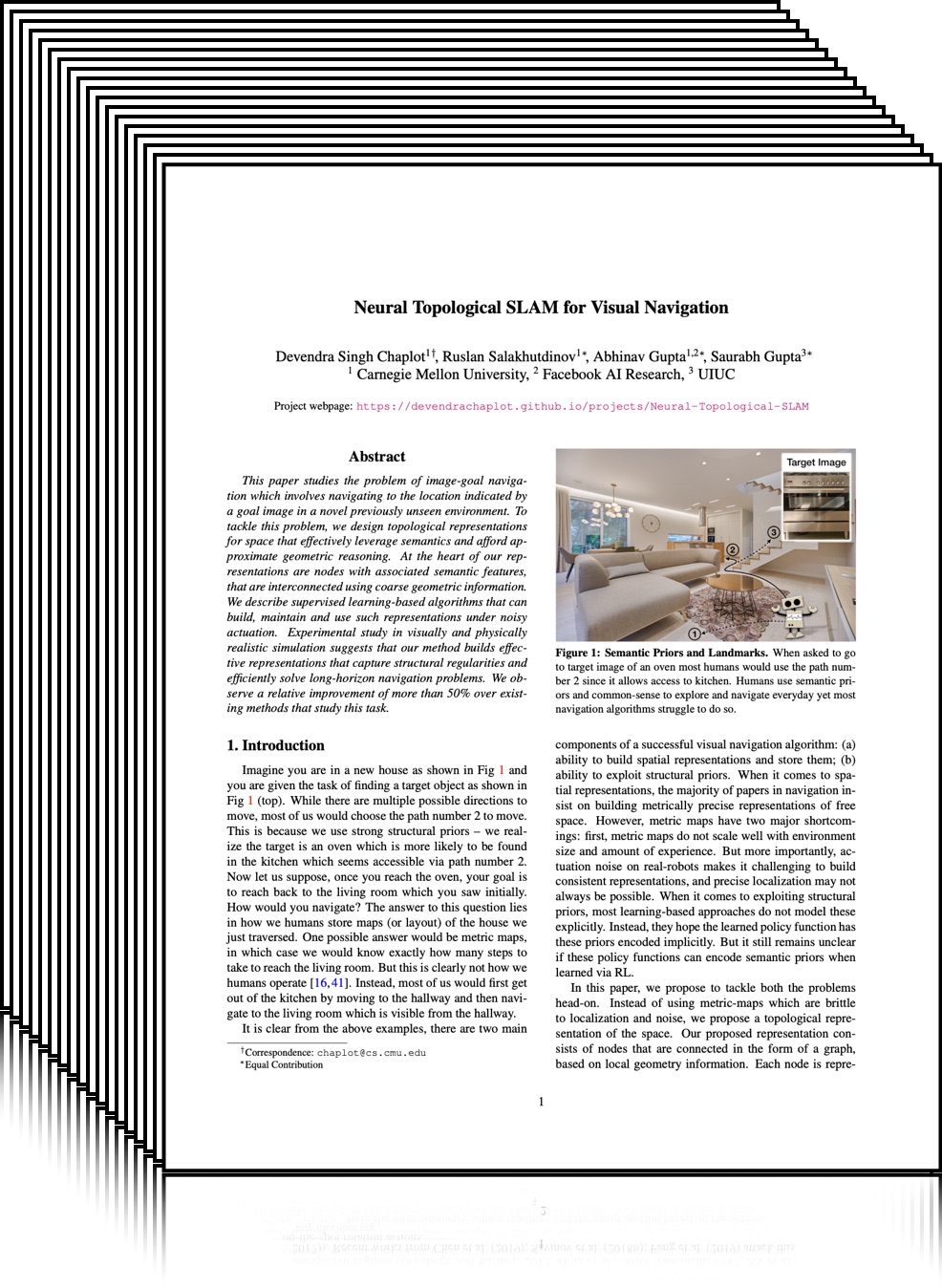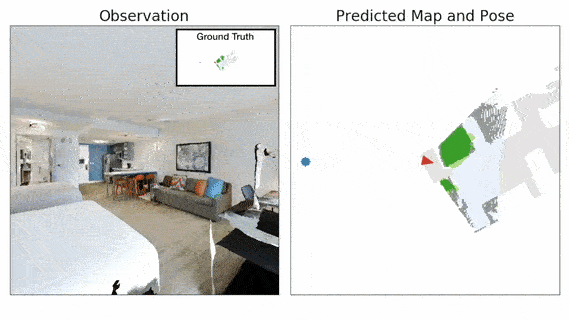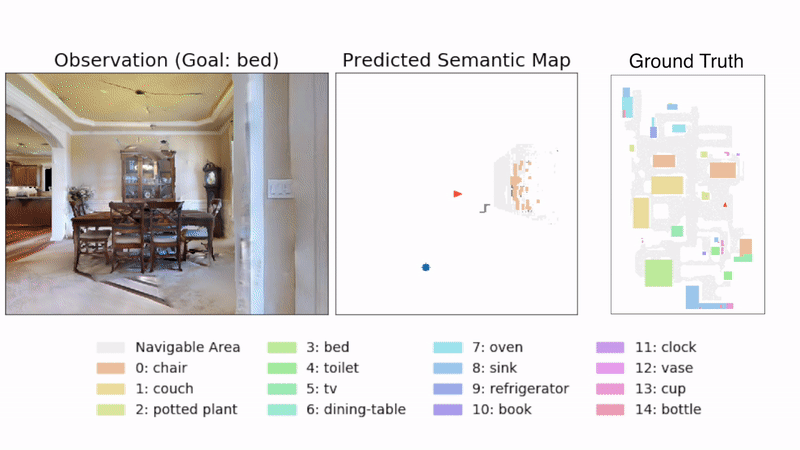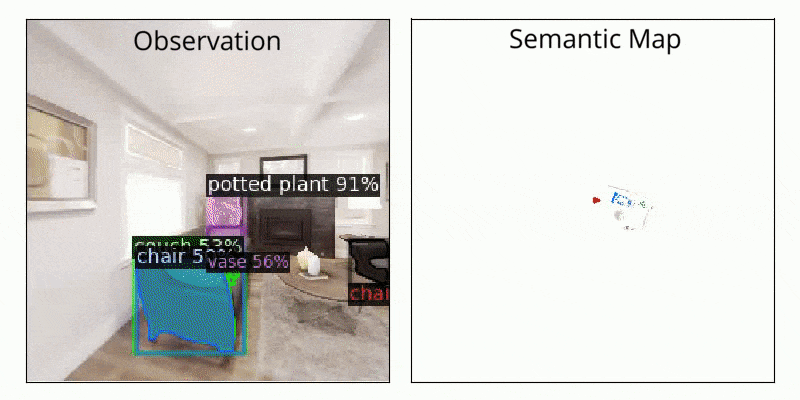
|
|
|
|
|
|
|
|
|
|
 |
 |

|
Citation
@inproceedings{chaplot2020neural,
title={Neural Topological SLAM for Visual Navigation},
author={Chaplot, Devendra Singh and Salakhutdinov, Ruslan and
Gupta, Abhinav and Gupta, Saurabh},
booktitle={CVPR},
year={2020}}
|
|
Active Neural SLAM
 |
Semantic Exploration
 |
Semantic Curiosity
 |
AcknowledgementsWebsite template from here and here. |